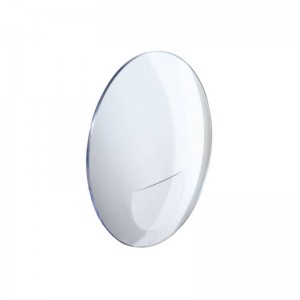
1.59 PC Blue Block Bifocal Lens
Why Polycarbonate Lenses?
Thinner and lighter than plastic, polycarbonate (impact-resistant) lenses are shatter-proof and provide 100% UV protection, making them the optimal choice for kids and active adults. They're also ideal for strong prescriptions since they do not add thickness when correcting vision, minimizing any distortion.

How Do Bifocal Lenses Work?
Bifocal eyeglass lenses contain two lens powers to help you see objects at all distances after you lose the ability to naturally change the focus of your eyes due to age, also known as presbyopia.

Due to this specific function, bifocal lenses are most commonly prescribed to people over the age of 40 to help compensate for the natural degradation of vision due to the aging process.


7.5 Hours/ Day
7.5 Hours is the daily screen time average we spending at our screens. It's important that we protect our eyes. You wouldn't go out on a sunny summer day without sunglasses, so why would you not protect your eyes from the light that your screen emits?
Blue Light Sucks
Blue light is commonly known to cause "Digital Eye Strain" which includes: dry eyes, headaches, blurred vision, and to negatively affect your sleep. Even if you don't experience this, your eyes are still negatively affected by blue light.

Blue Light Blocking Bifocal Lens
Blue light blocking bifocal lenses have two different prescription powers in one lens, giving those who wear them the benefits of two pairs of glasses in one. Bifocals offer convenience because you no longer have to carry around two pairs of glasses.
Typically an adjustment period is necessary for most new bifocal wearers due to the two prescriptions in one lens. Over time, your eyes will learn to move effortlessly between the two prescriptions as you move from one task to the next. The best way to achieve this quickly is by wearing new bifocal reading glasses as often as possible, so your eyes get used to them.










